Indian Ringneck Parakeets: Overview, Characteristics and Care
Indian Ringneck Parakeets are a popular choice for bird lovers due to their striking colors and lively personalities. These parrots, also known as Indian Ringneck Parrots, are native to Asia and Africa, where they can be found in a variety of habitats, including forests, grasslands, and agricultural areas. In this article, we will explore the characteristics, behavior, and care of Indian Ringneck Parakeets, as well as their conservation status.
Indian Ringneck Parakeets are medium-sized parrots that normally grow up to 16 inches in length. They are known for their distinctive ring-shaped markings around their necks, which can come in a variety of colors, including green, blue, yellow, and white. These parrots are also known for their playful and curious personalities, which make them popular pets.
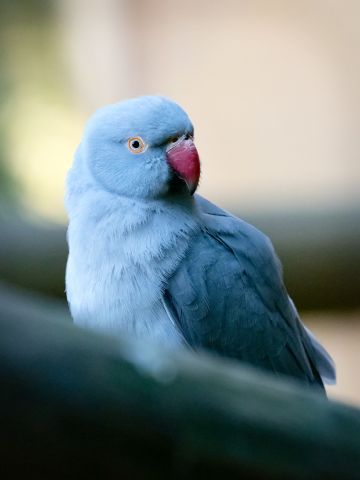
To keep an Indian Ringneck Parakeet healthy and happy, it is important to provide them with a balanced diet that includes a variety of fruits, vegetables, and seeds. These parrots also require plenty of socialization and mental stimulation, as they can become bored and destructive if left alone for too long. By providing the right care and attention, Indian Ringneck Parakeets can make wonderful and rewarding pets.
Key Takeaways
- Indian Ringneck Parakeets are medium-sized parrots with distinctive ring-shaped markings around their necks.
- These parrots require a balanced diet, socialization, and mental stimulation to stay healthy and happy.
- Indian Ringneck Parakeets are popular pets due to their playful and curious personalities.
Overview of Indian Ringneck Parakeet
The Indian Ringneck Parakeet, also known as the Rose-Ringed Parakeet or Ring-Necked Parakeet, is a medium-sized bird species that is commonly kept as a pet bird. They are known for their distinctive ring around their neck, which is more prominent in males than females.

Indian Ringnecks are highly intelligent and social birds, and with proper care and attention, they can live for up to 30 years or more. They are native to India and surrounding regions, but have been introduced to other parts of the world, including the United States, where they are popular as pets.
These birds are generally easy to care for, but they do require a lot of attention and interaction to stay happy and healthy. They are active birds that need plenty of space to move around and play, and they also need a varied and balanced diet to maintain their health.
Indian Ringnecks are known for their ability to mimic human speech and other sounds, and they can learn to say a wide variety of words and phrases with proper training. They are also active and curious birds that enjoy exploring their environment and interacting with their owners.
Overall, the Indian Ringneck Parakeet is a popular and rewarding pet parrot species that can provide years of companionship and entertainment for their owners.
What are the Physical Characteristics of Indian Ring-Necked Parakeets?
Indian Ringneck Parakeets are medium-sized parrots, typically measuring between 14 to 17 inches (35-43 cm) in length from head to tail. They have long tail feathers that make up about half of their total length. The feathers of the Indian Ringneck are generally green, with three bands of color on their tails. The bands can be blue, yellow, or red, depending on the subspecies.
The Indian Ringneck Parakeet is sexually dimorphic, meaning that males and females have different physical characteristics. The adult male sports a black ring around his neck, while the hen and immature birds of both sexes either show no neck rings, or display shadow-like pale to dark grey neck rings.
Indian Ringneck Parakeets have a hooked beak that they use to crack open seeds and nuts. Their feet are zygodactyl, which means that they have two toes pointing forward and two toes pointing backward, allowing them to grip branches and perch with ease.

The feathers of the Indian Ringneck Parakeet are soft and downy, and they molt twice a year. During a molt, the bird will lose some of its feathers and grow new ones in their place. This can cause the bird to look a little scruffy for a few weeks, but it is a natural process and nothing to be concerned about.
In terms of weight, Indian Ringneck Parakeets are relatively lightweight, weighing in at around 4 ounces. However, they are strong fliers and can cover long distances in search of food and water.
The Indian Ringneck Parakeet is a beautiful and unique bird with striking physical characteristics. Its long tail, three bands of color, and black ring around the neck make it a popular choice for bird enthusiasts and pet owners alike.
What are the Behavior and Temperament Characteristics of Indian Ring Necks?
Indian Ringneck Parakeets are known for their vibrant personalities. They are intelligent, playful, and energetic birds, with a strong sense of independence. They can be quite self-entertaining, but they also appreciate engaging playtime and interaction with their human companions.
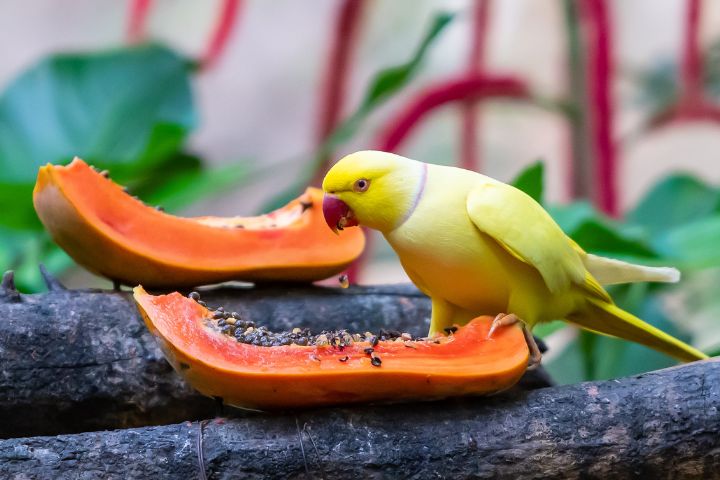
These birds are highly social and enjoy being part of a flock, whether it is with other birds or humans. They are known to form strong bonds with their owners and can become quite attached. They are also capable of mimicking human speech, which can be a fun and entertaining aspect of their personality.
However, it is important to note that Indian Ringneck Parakeets require a lot of attention and care. They are not your average pets that can be tamed with minimal attention. These birds are, quite literally, thirsty for attention. Their sweet side completely disappears when they’re not given the attention they believe they deserve.
Indian Ringneck Parakeets also have a love for chewing, which is a natural behavior for birds. It is important to provide them with plenty of toys and chewable items to keep them occupied and prevent destructive behavior.
Indian Ringneck Parakeets are fun, friendly, and willful birds that can make great pets for those willing to provide the attention and care they require.
Where Do Indian Ringnecks Come From?
Indian Ringneck Parakeets are native to a wide geographic range that covers parts of South Asia and Africa. These birds are found in countries like India, Pakistan, Bangladesh, Nepal, Sri Lanka, and regions of northern and central Africa. In their natural habitat, Indian Ringneck Parakeets live in large flocks and are often seen in wooded areas, forests, and farmlands.
These birds are well adapted to living in forested areas, especially in the foothills of the Himalayas. They prefer to live in areas with a mix of trees and grasslands, where they can find plenty of food and nesting sites. In addition to their native range, Indian Ringneck Parakeets have been introduced into many other parts of the world, including northern and western Europe.
The species’ range now includes Pakistan, Afghanistan, Nepal, southern Vietnam, and India. In their native Sri Lanka, India, and surrounding regions, these apple-green birds originally took up residence in the semiarid forests or wooded areas. They are also known to inhabit open areas with scattered trees, cultivated land, and even urban environments.
Indian Ringneck Parakeets are highly adaptable birds that can thrive in a variety of different habitats. They are intelligent and resourceful, and they have proven to be successful in both their native range and in introduced populations around the world.
What Do Indian Ringneck Parrots Eat?
Indian Ringneck Parakeets have a diverse diet and can eat a variety of foods. They usually feed on buds, mulberry, and in the summer, they feed on dates. They nest inside palm trees and eat from sunflower and corn fields. Parakeets will take a large variety of food and can be fed on a number of different diets.
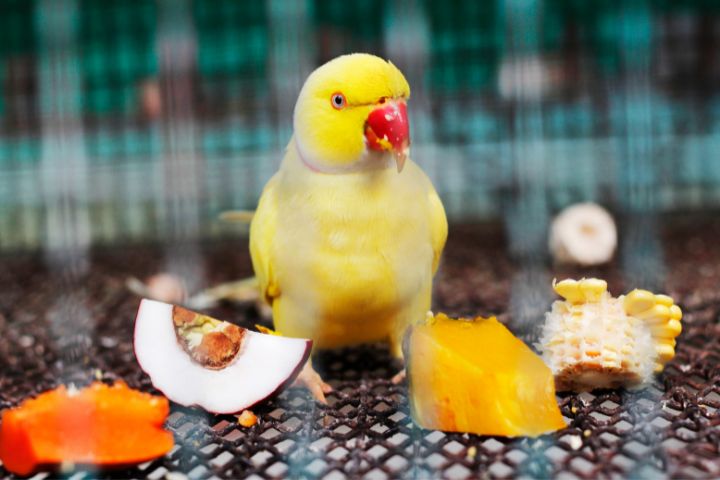
A balanced diet for an Indian Ringneck Parakeet should include a variety of fresh fruits and vegetables, seeds, grains, and nuts. Fresh fruits and vegetables should make up the majority of their diet, with seeds and nuts serving as occasional treats. Feeding a varied diet will help ensure that your parakeet receives all the nutrients it needs to stay healthy.
It is important to note that some foods are toxic to parakeets and should be avoided. These include avocado, chocolate, caffeine, alcohol, and foods high in salt and sugar. Additionally, parakeets should not be fed any human food that contains preservatives or additives.
Parakeets also require a source of clean, fresh water at all times. The water should be changed daily to prevent the growth of harmful bacteria.
What is the Health and Lifespan of Indian Ring Necks?
Indian Ringneck Parakeets are known for their hardy nature and relatively long lifespan compared to other pet birds. With proper care and nutrition, these parakeets can live between 20 to 30 years, and some have been known to live even longer.
To ensure a healthy and long life for an Indian Ringneck Parakeet, it is important to provide them with a balanced diet, plenty of exercise, and regular veterinary check-ups. Signs of a healthy bird include bright and clear eyes, clean feathers, and a strong and active demeanor.
However, Indian Ringneck Parakeets can be prone to certain health issues such as respiratory infections, feather plucking, and egg binding in females. It is important to monitor their behavior and seek veterinary care if any unusual symptoms arise.
In addition, it is important to provide a clean and safe environment for Indian Ringneck Parakeets to prevent the spread of diseases and infections. Regular cleaning of their cage and toys, as well as providing fresh food and water, can help maintain their health and well-being.
What is the Breeding and Reproduction of Indian Ringneck Parrots?
Indian Ringneck Parakeets reach sexual maturity around the age of 2-3 years. In the wild, they typically breed from January to March, but in captivity, they can breed almost year-round. It’s essential to ensure that both birds in a pair are healthy and mature enough for breeding.
Male Indian Ringneck Parakeets become sexually active during the breeding season and will be ready to mate with any willing female. Bowing and staring at female birds caged near him are two steady signs that a male wants to breed with a particular female.

Breeding Ringneck Parakeets requires a lot of patience and dedication. A breeder should always select birds with good genetic histories and no health issues or undesired traits. It’s also important to separate your breeding pair of ringnecks from other pairs. Ringneck parrots don’t mate for life and will often lose interest or attempt to swap partners if they can see other birds.
Ring-necked parakeets are hole-nesters, often taking over an old woodpecker nest hole, or a larger-sized nest box. They start nesting early, often in January, but some birds lay eggs as late as June. The early start to the breeding season means that they have a wide choice of nesting sites with little competition for holes.
Color mutations, such as blue, yellow, and white, have been developed in captivity through selective breeding. However, it’s important to note that not all color mutations are healthy, and some may even have a shorter lifespan than the standard green Indian Ringneck Parakeet. It’s crucial to research and consult with a reputable breeder before attempting to breed color mutations.
Keeping an Indian Ringneck Parakeet as a Pet
Indian Ringneck Parakeets have been kept as pets for centuries and remain a favorite companion bird today. They are intelligent, social, and can be excellent talkers. However, they are a long-term commitment, and a devoted owner will do best with these birds.
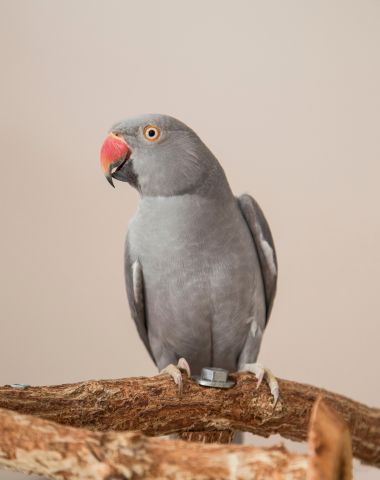
When keeping an Indian Ringneck Parakeet as a pet, it is essential to provide them with a large cage. The bigger the cage, the better, as these birds are active and need plenty of space to move around. A minimum cage size of 24″wx24″dx36″h is recommended. Additionally, it is crucial to provide plenty of toys and perches to keep them entertained and stimulated.
Check out our post “What Size Cage Does an Indian Ringneck Need?”
It is also important to find an avian vet who is experienced with Indian Ringneck Parakeets. Regular check-ups can help catch any potential health issues early on and ensure that your bird is healthy and happy.
An Indian Ringneck Parakeet is best suited for an owner who appreciates an outgoing companion that is not afraid to show off. They thrive on social interaction and need daily attention and playtime. They are not ideal for owners who are frequently away from home or unable to provide the necessary care.
One of the most notable characteristics of Indian Ringneck Parakeets is their talking ability. While not all birds will talk, many have the potential to learn a wide range of words and phrases. Consistency and patience are key when teaching your bird to talk.
An Indian Ringneck Parakeet can make a wonderful pet for the right owner. With proper care and attention, they can provide years of companionship and entertainment.
Conservation Status
The Indian Ringneck Parakeet, is listed as Least Concern by the International Union for Conservation of Nature (IUCN). This is due to its wide distribution and large population size, estimated to be in the millions.
Despite being listed as Least Concern, the Indian Ringneck Parakeet faces threats to its populations. Habitat loss and fragmentation due to deforestation and urbanization are major threats to the species. In addition, the species is often captured for the pet trade.

There is a concerning issue in some regions where parakeets have escaped or were released into the wild. These parakeets have established feral populations that are rapidly growing and are found around urban and suburban areas. While their presence can initially seem harmless, the unchecked expansion of these feral populations can lead to a range of ecological problems. These parakeets compete with native bird species for resources, disrupt local ecosystems, and sometimes even outcompete local birds for nesting sites.
In its native range, the Indian Ringneck Parakeet is considered an agricultural pest and is sometimes hunted for its meat and feathers. However, the species is protected by law in some countries, including India, where it is considered a sacred bird in some cultures.
Efforts to conserve the Indian Ringneck Parakeet include habitat restoration and protection, as well as regulation of the pet trade. In some areas, community-based conservation programs have been implemented to raise awareness about the importance of the species and its habitat. The challenge lies in finding a balance between appreciating these charismatic birds and mitigating the potential negative impacts they can have on the delicate balance of native habitats.
Varieties and Mutations
Indian Ringneck Parakeets are known for their beautiful and vibrant colors. They come in a variety of colors, including green, blue, yellow, and white. These colors can be further enhanced by mutations that occur in the wild or through selective breeding.
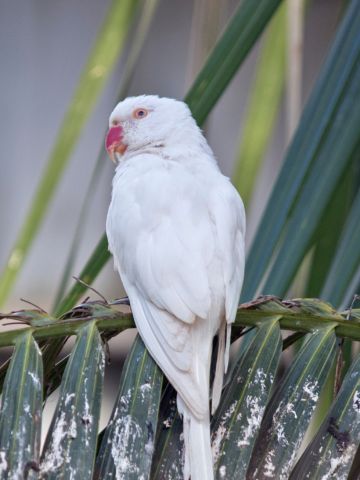
The most common mutation is the blue variety, which is a result of a genetic mutation that affects the production of melanin. Blue Indian Ringnecks have a lighter shade of blue on their wings and tail feathers, while their body remains green. Another popular mutation is the lutino variety, which has a yellow body with red eyes.
In addition to these mutations, Indian Ringneck Parakeets also come in a variety of colors, including grey, violet, and turquoise. These colors can be further enhanced by selective breeding, which has resulted in a wide range of color variations.
Breeding Indian Ringneck Parakeets for their mutations is a popular hobby among bird enthusiasts. However, it is important to note that not all mutations are healthy or desirable. Some mutations can result in health problems or deformities, so it is important to research and understand the genetics of the mutations before breeding.
The variety and mutations of Indian Ringneck Parakeets make them a popular choice for bird lovers who appreciate their beauty and unique characteristics.
Frequently Asked Questions
What are some other common names of the Indian Ringneck Parakeet?
The Indian Ringneck Parakeet is also commonly referred to as the Rose-ringed Parakeet or Ring-necked Parakeet.
What are some other color variations of Indian Ringneck Parakeets?
In addition to the common green and blue varieties, Indian Ringneck Parakeets can also come in lutino (yellow), albino (white), and pied (multi-colored) variations.

What is the average size of an Indian Ringneck Parakeet?
Indian Ringneck Parakeets are medium-sized birds, with an average length of 16 inches and a wingspan of 12 inches.
What are some foods that should not be fed to Ringneck Parrots?
Some foods that should not be fed to Indian Ringneck Parakeets include avocado, chocolate, caffeine, alcohol, and high-fat or high-sugar foods.
What is a good diet for an Indian Ringneck Parakeet?
A healthy diet for an Indian Ringneck Parakeet should consist of a variety of fresh fruits, vegetables, and grains, as well as a high-quality pellet or seed mix.
What are the differences between male and female Indian Ringneck Parakeets?
Male Indian Ringneck Parakeets are typically larger and have a more pronounced ring around their necks. Additionally, male birds are more likely to develop talking abilities.
What is the biological classification or an Indian Ringneck Parakeet?
The Indian Ringneck Parakeet belongs to the Psittacidae family, which includes parrots, macaws, and cockatoos. Its scientific name is Psittacula Krameri.
The biological classification for the Indian Ringneck Parakeet:
- Domain: Eukaryota
- Kingdom: Animalia
- Phylum: Chordata
- Class: Aves
- Order: Psittaciformes
- Family: Psittacidae
- Genus: Psittacula
- Species: Psittacula krameri
What Is Proper Care for an Indian Ringneck Parakeet?
Proper diet, grooming, veterinary care, and attention to habitat setup are key to raising a healthy, well-adjusted Indian ringneck parakeet. Here are some care essentials:
- Varied Diet: Feed a quality seed mix, supplemented with pellets, fruits, veggies, sprouted seeds, nuts, and grains.
- Yearly Vet Exams & Checkups: Schedule wellness exams with an avian vet, plus prompt visits if signs of illness arise.
- Nail Trimming: Trim overgrown claws every 4-6 weeks to prevent injury and discomfort. Avoid the blood vessel inside.
- Bathing: Indian ringnecks benefit from regular baths since they don’t get as wet as in the wild. Use a shower perch, sink sprayer or bird bath to offer water a few times weekly.
- Socialization: Spend time interacting, training and playing with an Indian ringneck parrot daily. Socialization prevents behavior problems.
- Safe Toys: Give bird-safe natural wood, rope, and plastic toys to chew and play with. Rotate frequently to prevent boredom.
What Are Signs of a Healthy Indian Ringneck Parakeet?
Watch for these signs to know your Indian ringneck parakeet is healthy:
- Active, energetic, and inquisitive
- Bright, clear eyes
- Clean, well-groomed feathers
- Strong grip on perches and toys
- Healthy appetite and drinking
- Proper feather coloration
- Smooth, well-formed beak and nails
- Normal droppings
- Responsive and interested in training
Is the Indian Ringneck Parakeet a smaller version of the Alexandrine Parrot?
No, the Indian Ringneck Parakeet is a separate species from the Alexandrine Parrot. While they are similar in appearance, the Alexandrine Parrot is larger and has a longer tail. Alexandrine Parakeets tend to have more muted tones of green and blue, often with a hint of maroon on their wings. Whereas Indian Ringneck Parakeets, come in a wider range of colors as mentioned above.
Read our post “What Size Cage Does an Indian Ringneck Need?”
Conclusion
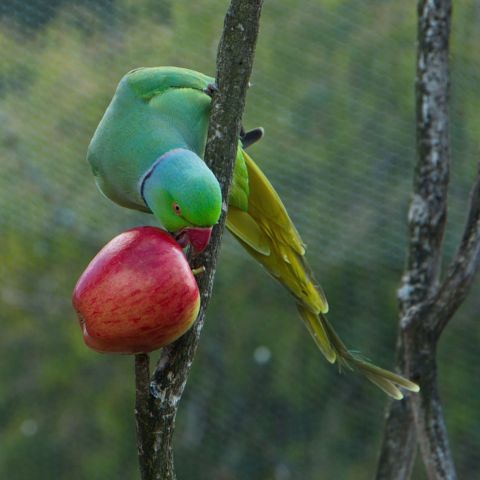
Indian Ringneck Parakeets are fascinating and rewarding companions for the right owners. With their captivating colors, intriguing behavior, and impressive lifespan, they have earned a beloved place in the world of aviculture.
These birds have big personalities and love to vocalize. They are playful and love to entertain their family. Due to their temperamental natures, they require a lot of training and attention to stay tame. However, they learn quickly and are highly intelligent birds, making them a joy to interact with.
In terms of diet, Indian Ringneck Parakeets are primarily herbivores and their diet consists of fruits, vegetables, and seeds. They should also have access to fresh water at all times. They are easy to take care of and not picky about what they eat.
Indian Ringneck Parakeets are affectionate and love attention. They are very curious and love to spend time with their owners. They also love to play and can be trained to do tricks and even talk. These birds have a slender build and can grow up to 16 inches in length, making them a majestic addition to any household.
Overall, Indian Ringneck Parakeets are a great choice for those looking for an intelligent, playful, and affectionate companion. With proper care and attention, these birds can live a long and happy life with their owners.

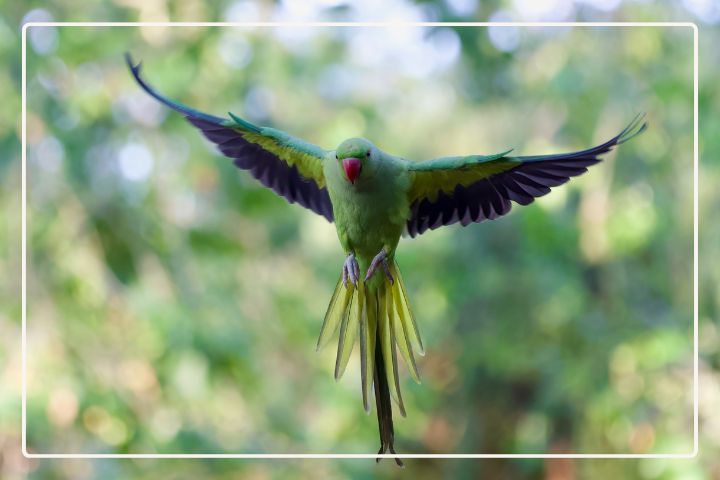

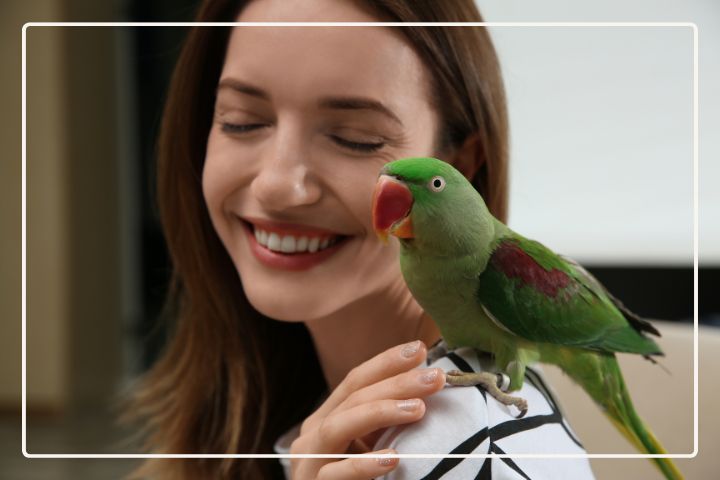
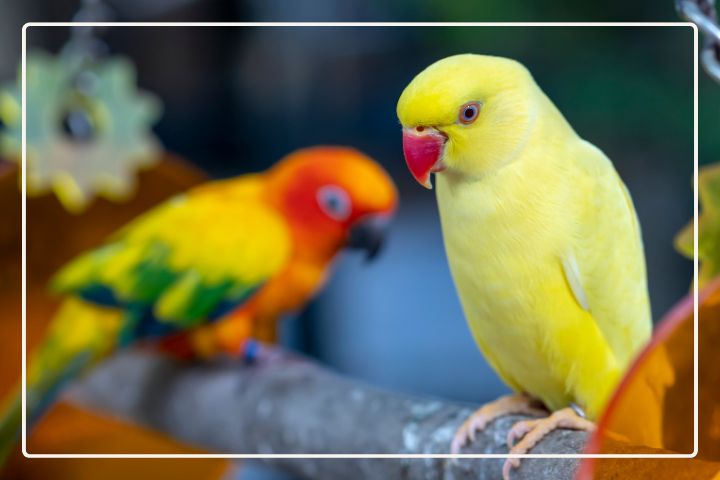

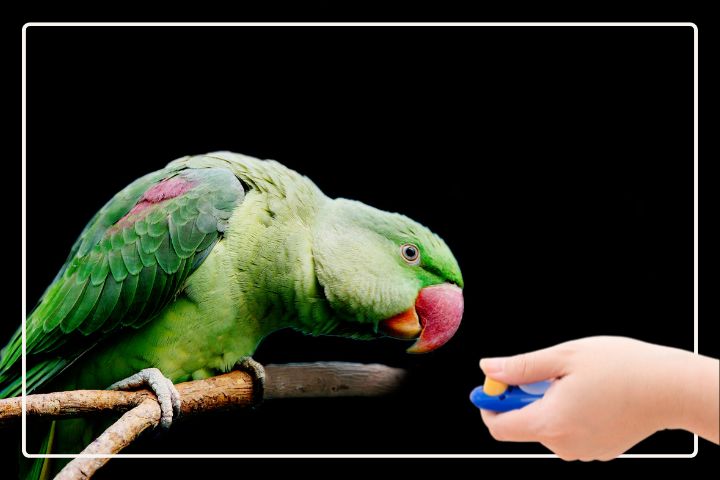

Really excellent information can be found on web site.